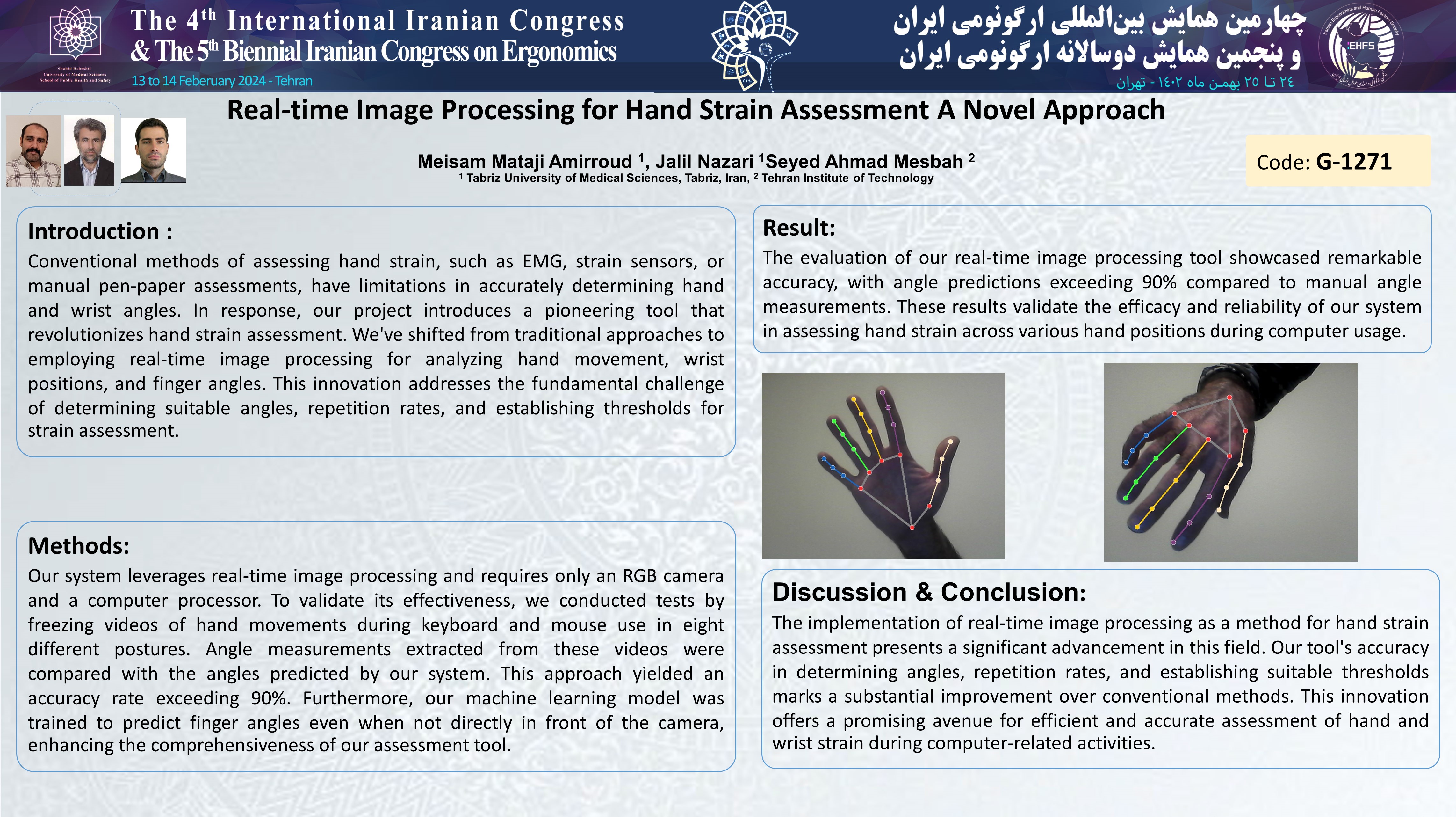Real-time Image Processing for Hand Strain Assessment: A Novel Approach
Code: G-1271
Authors: Meisam Mataji Amirroud © ℗, Jalil Nazari, Seyed Ahmad Mesbah
Schedule: Not Scheduled!
Download: Download Poster
Abstract:
Introduction
Conventional methods of assessing hand strain, such as EMG, strain sensors, or manual pen-paper assessments, have limitations in accurately determining hand and wrist angles. In response, our project introduces a pioneering tool that revolutionizes hand strain assessment. We've shifted from traditional approaches to employing real-time image processing for analyzing hand movement, wrist positions, and finger angles. This innovation addresses the fundamental challenge of determining suitable angles, repetition rates, and establishing thresholds for strain assessment.
Methods and Materials / Case Report
Our system leverages real-time image processing and requires only an RGB camera and a computer processor. To validate its effectiveness, we conducted tests by freezing videos of hand movements during keyboard and mouse use in eight different postures. Angle measurements extracted from these videos were compared with the angles predicted by our system. This approach yielded an accuracy rate exceeding 90%. Furthermore, our machine learning model was trained to predict finger angles even when not directly in front of the camera, enhancing the comprehensiveness of our assessment tool.
Results
The evaluation of our real-time image processing tool showcased remarkable accuracy, with angle predictions exceeding 90% compared to manual angle measurements. These results validate the efficacy and reliability of our system in assessing hand strain across various hand positions during computer usage.
Conclusion
The implementation of real-time image processing as a method for hand strain assessment presents a significant advancement in this field. Our tool's accuracy in determining angles, repetition rates, and establishing suitable thresholds marks a substantial improvement over conventional methods. This innovation offers a promising avenue for efficient and accurate assessment of hand and wrist strain during computer-related activities.
Key Words
Hand strain assessment, Real-time image processing, Angle prediction, Machine learning, RGB camera, Computer processor, Ergonomics, Occupational health
Comments (0)
Post a comment
Post comment is closed by admin.
